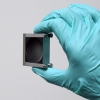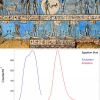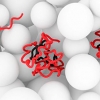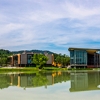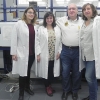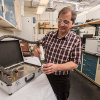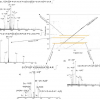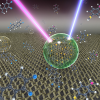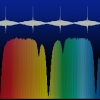Spectroscopy News
Pages
University of Alabama at Birmingham, USA, researchers have made a microscopic snapshot of the early renal lipid changes in acute kidney injury, using matrix-assisted laser desorption/ionisation (MALDI) tissue imaging to localise the changes.
New method allows hyperpolarised xenon gas, to be dissolved into minute samples of substances without disrupting their molecular order during NMR spectroscopy.
Researchers at University of Texas Southwestern Medical Center, Dallas, USA, have determined that light reflectance spectroscopy can differentiate between malignant and benign prostate tissue with 85% accuracy.
Terahertz radiation is of growing interest due to its potential for new spectroscopy and imaging applications as well as wireless communication networks with extremely high bandwidth. However, there are few off-the-shelf components available for manipulating terahertz waves.
Fluorescence spectroscopy has been used to study the ancient pigment, Egyptian blue.
Entries for the IRDG Chalmers and Dent Student Travel Award for a PhD to present their research at the SciX meeting.
At a ceremony at the University of Copenhagen, Waters officially welcomed the University’s Forensic Chemistry Laboratory within the Department of Forensic Medicine into the Waters Centers of Innovation Program.
New UK laboratory provides access to analytical technologies to help strengthen modern life and health sciences research.
The protein α-synuclein plays an important role in Parkinson’s and other neurodegenerative diseases. Although a considerable amount is known about the structure of the protein within the Parkinson’s-typical amyloid deposits, nothing was known about its original state in the healthy cell up to now. High-resolution nuclear magnetic resonance and electron paramagnetic resonance spectroscopy have helped to visualise the protein in healthy cells.
Edinburgh Instruments have installated one of their fluorescence spectroscopy systems at the brand new Vidyasirimedhi Institute of Science and Technology (VISTEC) in Thailand.
We are all probably aware of the detection of metabolites in wastewater to indicate the levels of illegal drug usage in a locality, but researchers at the University of Valencia have extended this to monitor alcohol consumption in near real time.
Fake or low-quality medicines and food supplements are a continuing global problem in developing nations, and indeed the developed world is not immune. A low-cost, portable prototype using nuclear quadrupole resonance spectroscopy can detect tainted medicines and food supplements.
The US Department of Energy’s Oak Ridge National Laboratory and Sciex of Framingham, MS, USA, have signed a licensing agreement for technologies that speed up, simplify and expand the use of mass spectrometry instrumentation.
Terahertz imaging technology has the potential to help conservationists and academics better understand the history behind cultural artefacts.
A chemist at the National Institute of Standards and Technology (NIST) has developed a portable version of his headspace method for recovering trace chemicals such as environmental pollutants and forensic evidence including secret graves and arson fire debris.
A chip-based device can generate a laser signal with frequencies spaced in a comb-like fashion. In general, light and water waves alike stretch out and dissipate as they move further and further away from their source. However, there is a type of wave that maintains its shape as it propagates: solitons.
Medical testing has been undergoing a quiet but extensive metamorphosis as labs adopt the versatile technology mass spectrometry, which enables more precise diagnosis. A special issue of Clinical Chemistry, titled “Clinical Mass Spectrometry: Achieving Prominence in Laboratory Medicine”, showcases recent medical advances that this technology has made possible.
A new test for detecting biomarkers for cancer and diabetes based on two-dimensional mass spectrometry is more than 1000× more detailed and 100% faster than existing methods, new research by the University of Warwick, UK, suggests.
A technique to combine the ultra-sensitivity of surface enhanced Raman scattering (SERS) with a slippery surface invented by researchers at Pennsylvania State University, University Park, PA, USA, will make it feasible to detect single molecules of a number of chemical and biological species from gaseous, liquid or solid samples.
Electro-optic modulators, which can switch light on and off within just picoseconds, are enabling ever faster telecommunication over fibre optics, and the same tools have now been harnessed for high-speed and accurate molecular sensing in the near infrared.



